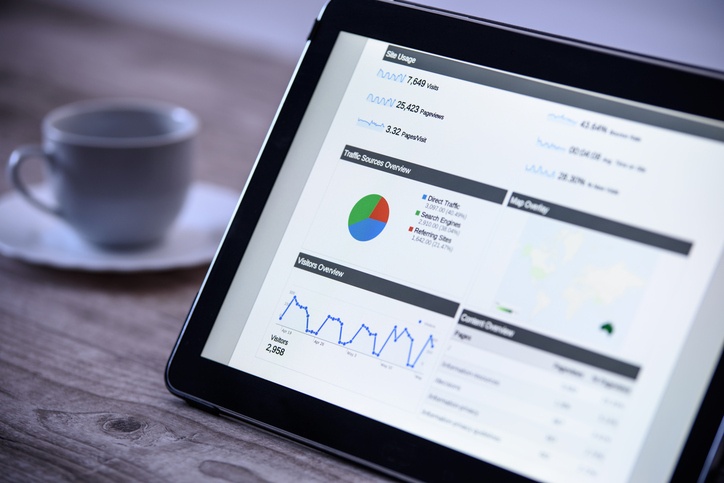
The Paid Media KPIs You Need to Be Measuring
July 26, 2017
There’s no avoiding it: Managing an effective paid search account means getting up close and personal with the numbers. It means wading through large data sets to quantify what exactly they mean for your account’s performance. Moreover, it means taking these metrics and using them to drive your account in the direction needed to increase its ability to produce profit.
And this is no easy task. To keep from drowning in this sea of data, you need to arm yourself with the knowledge not only to swim, but also to breathe underwater. This would all be a much easier undertaking if there weren’t so many key performance indicators (KPIs) to choose from. Which ones matter, and which should you focus your attention on to ensure your account is successful? To help you get to where you can make that choice, we’ve put together a list of all the KPIs that should matter to you, along with some context as to why.
But before we dive into that, it’s also important to note that the actual KPIs you use to define the success and drive the optimization of your account will vary greatly depending on the overall goal of your campaigns. If, for instance, you're putting together a branding campaign to increase your company’s presence in its vertical, impression numbers will be much more important to you than if you were building a search campaign targeting highly qualified traffic based on search intent.
Not to say that impressions are unimportant in search campaigns—far from it—but understanding the context behind your campaign and its goal will make deciding which KPIs to focus on a much easier task. With this in mind, let’s take a look at some KPIs you should be considering in all of your campaigns.
The Basics
These are some of the basic KPIs you will want to be familiar with before launching your accounts.
Clicks: This KPI is an indication of the number of clicks your campaign/ad group/keyword has received. Multiply it by your average cost per click (CPC) to get your total cost, or divide it by your impressions to get your average click-through rate (CTR). Consider garnering a click as the lowest-level conversion in your account.
Impressions: Unlike clicks, this is the number of times your ad or keyword has been served, regardless of whether it’s been interacted with.
Click-Through Rate (CTR): Your CTR is the percentage of impressions that are turning into clicks. These vary by vertical and account type, but a healthy CTR is the foundation for every high-performing campaign.
Cost Per Click (CPC): The CPC is how much you're spending on a per-click basis for the traffic you're driving through your account. Again, these can vary wildly, but keeping your CPC in a range you can afford in your budget is an important aspect to consider in your accounts.
Cost:This one is fairly self-evident. Cost is simply the total amount in a given time frame you have spent on the account, campaign, ad, or keyword in question. Keep an eye on this one, though, because overspending on any of these is a simple trap to fall into.
Positioning: This KPI is helpful only in campaigns where your ads are served in a ranked list. Often, optimizing an ad into a higher average position will increase that ad’s ability to drive clicks, increase CTR, and sometimes even help improve the quality of your traffic and thus improve your ads’ conversion rates. All of this comes with a price, however. Improving the position of your ads involves either increasing the price you’re willing to spend per click or investing a lot of time and manpower into improving your ads and landing pages in an effort to increase your quality scores.
What’s Really Important:
Now we’re getting into the real numbers you will need to focus on in most of your accounts to ensure they are reaching your goals and driving profitability for your company.
Conversions: No matter what your end goal is for a campaign, keeping an eye on the number of conversions you're able to drive is a great idea. Conversions will also need to be defined and set up in order to be accurately tracked. Doing so will give you the ability to increase investment in what’s really working in your campaign while de-emphasizing what’s not. It will also make communicating your account’s successes and learnings to others much easier.
Conversion Rate (CvR): While keeping a close eye on conversion numbers, it’s also important to note your CvR. Understanding that a certain term or targeting method is producing a great CvR will allow you to dig into why that’s the case, and use those learnings in other future campaigns. You may also find that some terms drive a ton of conversions, but your click-to-conversion rate is unusually low. Finding these anomalies in the data and digging into why they are occurring will give you a deep understanding of your market, and could make you a very reliable source of information that may be used outside of the digital marketplace.
Cost Per Conversion (CPA): Keeping the CPA within your range of profitability will be another focus point for most campaigns. This is where understanding how you can find high conversion volume at a good CvR will make your campaigns hum. This will also take an understanding of how a multitude of KPIs interact in your account. Knowing that a certain term in a certain position with a specific CPC can drive the right number of conversions will allow you to keep the CPA within your boundaries.
Search Impression Share: This is one I personally like to keep a close eye on. Search Impression Share is defined as the number of impressions you're receiving for a search term divided by the number that term was eligible to receive. I like to make a list of five to 10 terms in my account that are the most relevant to a marketing goal and track how often I’m able to garner an impression for these. This tells you how successfully you're targeting your market.
Quality Score (QS): Arguably one of the most important metrics to look at in any search campaign, QS is a 1-10 number assigned to each of your keywords based on each term’s performance in several categories: expected CTR, ad relevance, and landing page experience. The QS of your keyword is multiplied by your CPC bid to give you the real effective bid on any given term in the live auction. So, if your brand term has a QS of 10 and a bid of $1, a competitor with a QS of 1 would need to bid $10 to compete with you in the auction. Keeping these high will ensure that your campaigns perform at a high level.
Of course, there are many more paid media KPIs out there that you should work toward fully understanding and leveraging in your accounts. But if you can master these, then you're well on your way to driving profit in all of your campaigns.
Bonus Pro Tip: There are a number of data visualization tools available that can make monitoring these KPIs on a near real-time basis a snap. Databox is taking an early lead in offering easy-to-use dashboards to make data more actionable, which is why we love them at SmartBug Media.

About the author
Jacob Havenridge was formerly the Director of Paid Media at SmartBug. He is a Denver-based digital marketer with over 6 years of paid search experience. He has successfully managed millions in monthly media spend for household names nationwide in both B2C and B2B verticals. He has a strange affinity for data and numbers, loves a long day in the mountains, and has one child, Norman, a grumpy old Wheaten Terrier. Read more articles by Jacob Havenridge.










